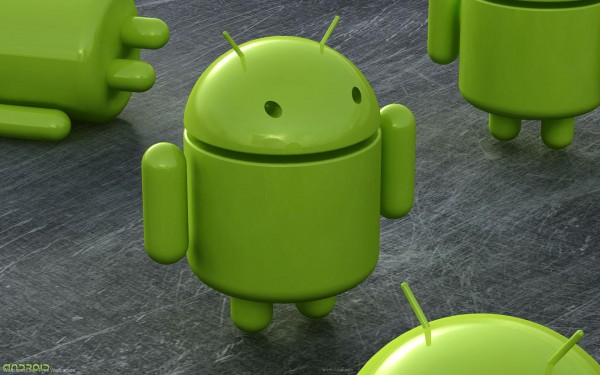Bill Gurley — Bill Gurley thinks that Android is an unstoppable freight train that will prevail against all its rivals. For Google, Android is not even a product with a business plan. It’s just a weapon at the service of their master domination strategy, a way to destroy any potential threats that may eventually kill their search monster. This is how they are doing it and the potential consequences.
“People get ready, there’s a train a comin'”
—The Impressions
From Zacks via Yahoo: Mark Vickery, On Thursday March 24, 2011, 4:58 pm EDT “BlackBerry maker Research In Motion (NasdaqGS: RIMM – News) beat its fiscal 4Q EPS estimates by 2 cents per share, but missed slightly on quarterly revenues and offered guidance well below the current consensus. This has sent RIMM shares down nearly 10% in after-market trading…”
Yesterday, after the market closed, Research in Motion, the makers of the Blackberry device, announced that they would be lowering their current quarter earnings due to lower average sales prices. In a separate announcement, the company proffered that their new tablet will support Android apps, yet the CEO also made it clear that he believes the world is overly focused on the criticality of having a large numbers of applications on your platform. They also suggested that the guidance issue is temporary, and relates mainly to a product cycle not a systematic change in the industry.
Despite all that has been written about Android, as well as its unquestionable early success, the world at large still doesn’t fully appreciate the raw power of this juggernaut. I have written about this in the past in Android or iPhone? Wrong Question, and Google Redefines Disruption: The “Less Than Free” Business Model. But even so, the more I see, the more I wonder if I too may have underestimated the unprecedented market disruption that is Android.
Google’s unbreachable castle
One of Warren Buffet’s most famous quotes is that “In business, I look for economic castles protected by unbreachable ‘moats’.” An “economic castle” is a great business, and the “unbreachable moat” is the strategy or market dynamic that heightens the barriers-to-entry and makes it difficult or ideally impossible to compete with, or gain access to, the economic castle. Here is a great post from the 37signals blog a few years back that walks through several different examples of potential moats.
Google wants to eliminate any potential threat to their castle.
For Google, the economic castle is clearly the search business, augmented by its amazing AdWords monetization framework. Because of its clear network effect, and amazing price optimization (though the customer bidding process), this machine is a monster. Also, because of its far-reaching usage both on and off of Google,AdWords has a volume advantage as well. Perhaps the most telling map with regards to the location of the castle can be found in Jonathan Rosenberg’s “Meaning of Open” blog post. In this open manifesto, Jonathan opines over and over again that open systems unquestionably result in the very best solutions for end customers. That is with one exception. “In many cases, most notably our search and ads products, opening up the code would not contribute to these goals and would actually hurt users.” As Rodney Dangerfield said in Caddyshack, “It looks good on you, though.”
AdWords is a highly respectable castle, and Google would clearly want to put a “unbreachable moat” around it. Warren himself is on record suggesting that Google’s moat is pretty good already. But where could you extend the moat? What are the potential threats to Google’s castle? Basically, any product that stands between the user and Google and has the potential to distract the choice of search destination is a threat. A great example is Firefox. Like many browsers, Firefox has a search bar built into the upper right corner. This leads to a substantial number of Google searches for which Google pays Firefox a handsome fee. From time to time, this fee must be negotiated, and as a result there are constant rumors that Firefox might chose another search engine, like Bing. Other examples include smart-phones and choices made by carriers and/or handset makers. As an example, a few years back, Verizon set the default search box on Blackberry’s to Bing instead of Google. Despite Warren’s faith in Google’s moat, there are ways to move the needle on search share, or at least hurt the economics by demanding more profit share for distribution.
Nobody can’t win against Android business model
So here is the kicker. Android, as well as Chrome and Chrome OS for that matter, are not “products” in the classic business sense. They have no plan to become their own “economic castles.” Rather they are very expensive and very aggressive “moats,” funded by the height and magnitude of Google’s castle. Google’s aim is defensive not offensive. They are not trying to make a profit on Android or Chrome. They want to take any layer that lives between themselves and the consumer and make it free (or even less than free). Because these layers are basically software products with no variable costs, this is a very viable defensive strategy. In essence, they are not just building a moat; Google is also scorching the earth for 250 miles around the outside of the castle to ensure no one can approach it. And best I can tell, they are doing a damn good job of it.
With Android, they are not building a business, they are building a moat.
Google has organized this defensive play with precision. Carriers and handset makers that use Android are given economics to do so. The Android version of the “AppStore” shares the majority of its economics with the carrier and handset makers. Once again, they are not building a business, they are building a moat (sorry for the repetitiveness, it’s intentional). Because they are “giving away” money to use their product, this creates a rather substantial conundrum for someone trying to extract economic rent for a competitive product in the same market.
This is the part that amazes me the most. I don’t know if a large organized industry has ever faced this fierce a form of competition – someone who is not trying to “win” in the classic sense. They want market share, but they don’t need economics. Imagine if Ford were faced with GM paying people to take Chevrolets? How many would they be able to sell? What if you received $0.10 for every free Pepsi you consumed? Would you still pay $1.50 for a Coke?
Free software will always win
Android may be the end of the software industry as we know it.
The combined market capitalizations of companies that build desktop operating systems, handset operating systems, mapping software (they give this away with Android also!), as well as internal software that helps to differentiate mobile devices is well over $100B, and may be several times that. Yet, there is no economic law that necessitates that these industries remain in their current form. When software was first imagined as a business, it seemed like a miraculous dream. Because the variable costs were zero, you would make near 100% profit on each incremental unit that you sold. Perhaps the resulting counter-force to this is that if someone can afford to build a near equivalent code base, than they can at their option price to marginal cost ($0.00), the very definition of perfect competition.
One might yearn to suggest that there is a market unjust here that should be investigated by some government entity, but let us not forget that the consumer is not harmed here – in fact far from it. The consumer is getting great software at the cheapest price possible. Free. The consumer might be harmed if this activity were prevented. And as we just suggested above, the market is finally driving towards software pricing that represents “perfect competition.”
In Silicon Valley we like to make light of industries that are facing digital disruption such as newspapers, the record industry, and the movie industry, suggesting that their executives “just don’t get it.” Perhaps now we are witnessing the disruption of not just analog businesses, but also formerly interesting digital businesses as well.
John Doerr, once said “The Internet is the greatest legal creation of wealth in history.” Android may be the opposite of that, the greatest legal destruction of wealth in history.
[Crossposted from Gizmodo]

